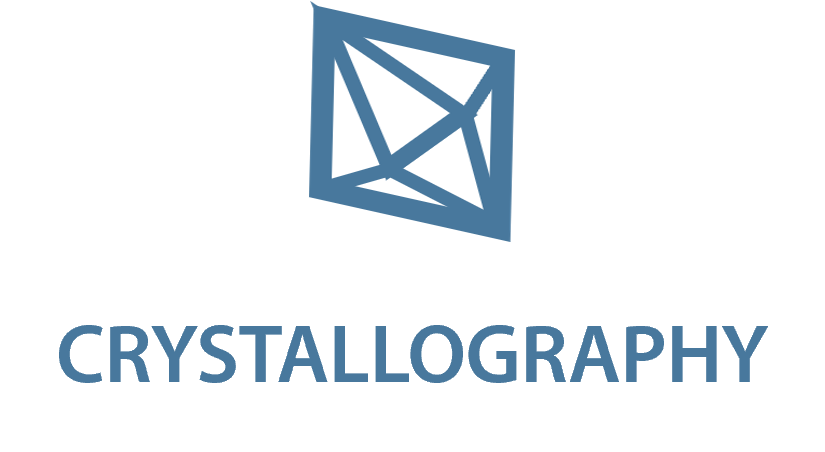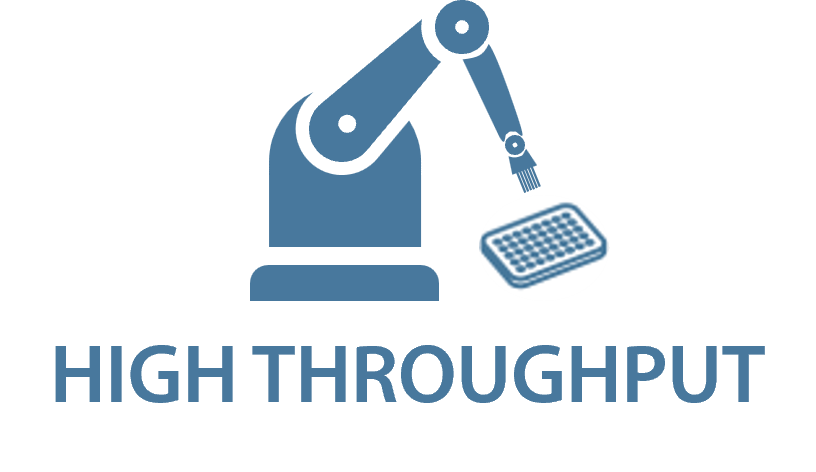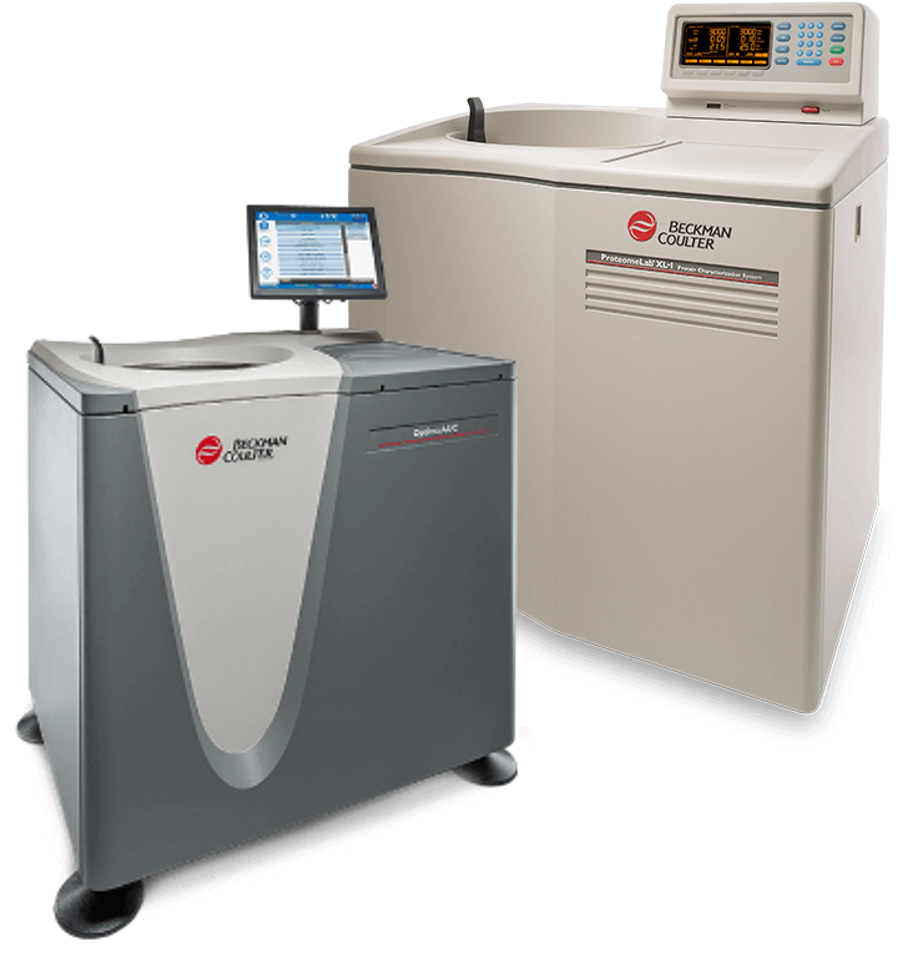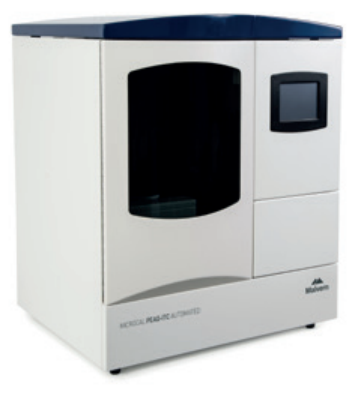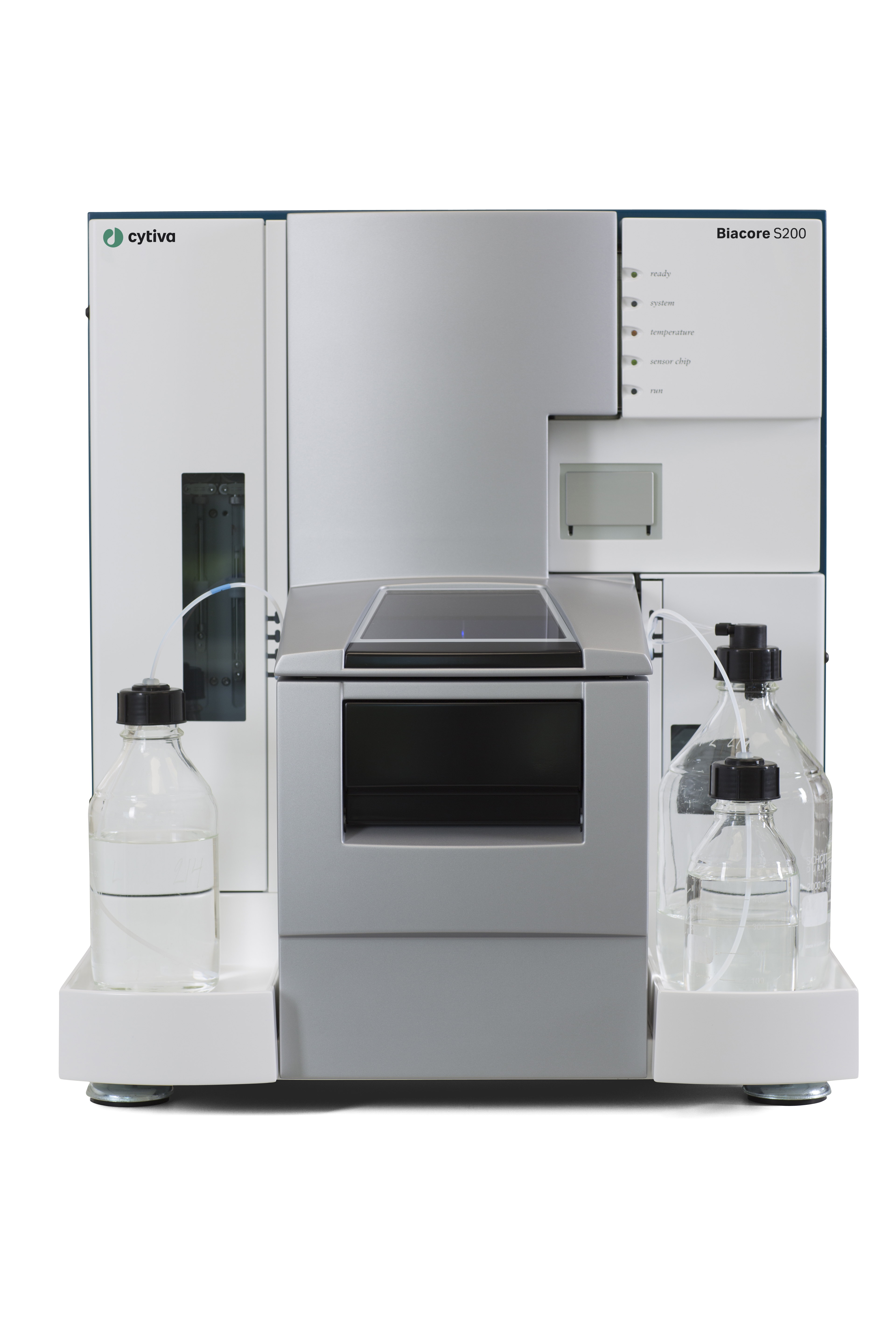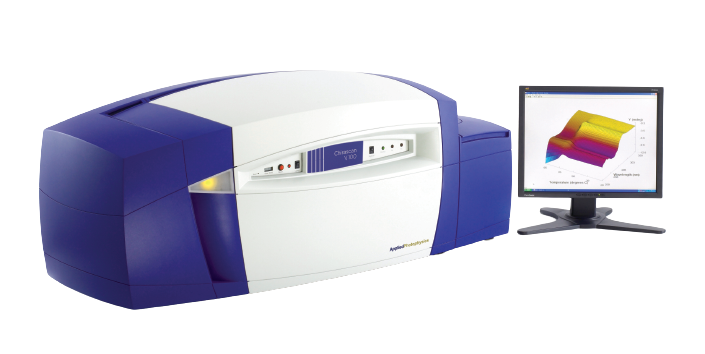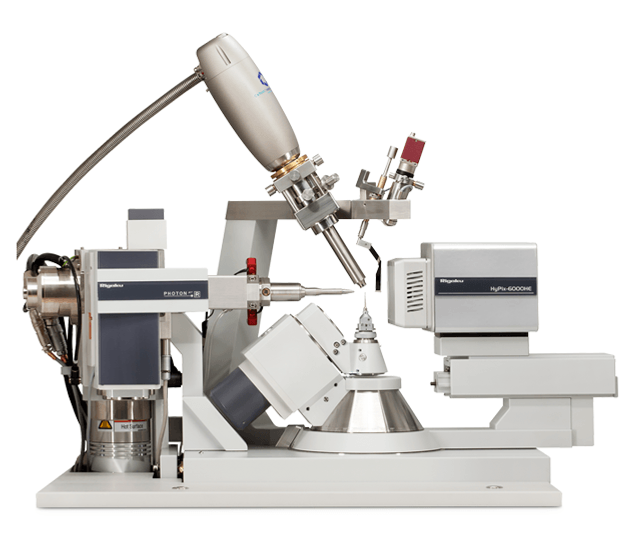
Equipment-old
| Technique | Instrument | Responsible person |
|---|---|---|
| Analytical ultracentrifugation | Optima AUC | Jan Komárek |
| ProteomeLab XL-1 | Jan Komárek | |
| Isothermal titration calorimetry | Auto PEAQ-ITC | Jitka Holková |
| VP-ITC | Jitka Holková | |
| Surface plasmon resonance | Biacore S200 | Josef Houser |
| Multichannel | Josef Houser | |
| SPR Imaging | Josef Houser | |
| Bio-layer interferometry | Octet RED96e | Josef Houser |
| Microscale thermoforesis | Monolith NT.115 | Eva Paulenová |
| Monolith NT.115 Pico | Eva Paulenová | |
| Size exclusion chromatography | OmniSEC | Josef Houser |
| UV-VIS spectroscopy | BioSpectrometer kinetic | Josef Houser |
| Circular dichroism | Chiroscan V100 | Josef Houser |
| Differential scanning calorimetry | Auto PEAQ-DSC | Josef Houser |
| VP-DSC | Josef Houser | |
| Differential scanning fluorimetry | Prometheus NT.48 | Eva Paulenová |
| Dynamic light scattering | DelsaMAX core | Tomáš Klumpler |
| SpectroLight 600 | Tomáš Klumpler | |
| Small-angle X-ray scattering | SAXS 2000 | Tomáš Klumpler |
| Cell sorting | CytoFLEX | Eva Paulenová |
| Imaging system | Odyssey M (temporary) | Jan Komárek |
| Pipetting robotics | sciFLEXARRAYER | Jan Komárek |
| Pipetting robotics & Crystallization | epMotion | Jana Kosourová |
| Phoenix | Jana Kosourová | |
| Dragonfly | Jana Kosourová | |
| Mosquito | Jana Kosourová | |
| Temperature-controlled crystallization | TG-40 | Josef Houser |
| Crystal plate storage and inspection | SpectroQ (20°C) | Jana Kosourová |
| SpectroQ (4°C) | Jana Kosourová | |
| X-ray diffraction | XtaLAB Synergy + Actor | Jaromír Marek |
Visit our labs from your chair - try the virtual tour!
Analytical ultracentrifugation: ProteomeLab XL-I and AUC Optima
Beckman Coulter ProteomeLab XL-I analytical ultracentrifuge is equipped with absorbance (wavelength range 190 – 800 nm) and interference optics and can be used for both sedimentation velocity and sedimentation equilibrium experiments. Analytical ultracentrifugation is applicable for proteins, nucleic acids, lipids, polysaccharides, viruses, and nanoparticles. It has broad applicability including the determination of sample homogeneity, oligomeric state of proteins (or molecular weight, respectively) and can be used to assess aggregation of sample and to study biomolecular interactions of self- and hetero-association systems (determination of stoichiometry and affinity).
PROFILE CARD (OPTIMA) PROFILE CARD (PROTEOMELAB) SERVICE MODE
Calorimetry: PEAQ-ITC Automated
Fully automated isothermal calorimeter Auto PEAQ-ITC with ultrasmall working cell (200 µl). ITC method is used for characterization of biomolecular interactions of small molecules, proteins, antibodies, nucleic acids, lipids and others. Enzyme kinetics, biological activity or the effect of molecular structure changes on binding mechanism can be also assessed. Complete thermodynamic profile of the molecular interaction in a single experiment (stoichiometry, Ka, ∆H and ∆S values).
VP-ITC is isothermal calorimeter with 1400 µl volume of working cell. ITC method is used for characterization of biomolecular interactions of small molecules, proteins, antibodies, nucleic acids, lipids and others. Complete thermodynamic profile of the molecular interaction can be obtained in a single experiment (stoichiometry, Ka, ∆H and ∆S).

PEAQ-DSC is differential scanning microcalorimeter with <200 µl volume of sample capillaries. DSC technique measures the heat changes that occur in the (bio)molecule sample solution during a controlled increase or decrease in temperature, on the basis of a temperature difference between the sample and the reference material. Automated version of PEAQ-DSC enables to run up to 282 samples in a row unattended.
VP-DSC is differential scanning microcalorimeter with 500µl volume of sample cell. DSC technique measures heat changes that occur in the (bio)molecule sample solution during a controlled increase or decrease in temperature, on the basis of a temperature difference between the sample and the reference material.
Differential scanning fluorimetry: Prometheus NT.48
Prometheus precisely characterizes thermal unfolding, chemical denaturation and aggregation in a single run within broad temperature range (15 - 110 °C). It is possible to measure up 48 samples in one run.
Microscale thermophoresis: Monolith NT.115
The Monolith systems measure equilibrium binding constants for a variety of molecules – thus allows to measure wide range of interactions from ion fragment binding up to interactions of large complexes (liposomes and ribosomes).

Microscale thermophoresis: Monolith NT.115 Pico
The Monolith systems measure equilibrium binding constants for a variety of molecules – thus allows to measure wide range of interactions from ion fragment binding up to interactions of large complexes (liposomes and ribosomes). Monolith NT.115 Pico allows analysis of high-affinity interactions down to pM range.
Biolayer interferometry: Octet RED96e
Biosensor system Octet utilizes BLI technology (biolayer interferometry) to detect the interaction parameters (kinetics, affinity) on a sensor chip. Octet RED96e enables simultaneous measurement of 8 channels ensuring high throughput. System is suitable especially for protein-protein or protein-nucleic acid interactions, however other binding systems can be evaluated as well.

Surface plasmon resonance: BiaCore S200
Biacore S200 is a successor of T200 model with higher sensitivity. This system monitors real-time, label-free interactions ranging from ions to viruses. The system offers a powerful, versatile solution for obtaining the highest quality kinetic, affinity, concentration, specificity, selectivity, and thermodynamic data and can be used for multiple applications, from early research to drug discovery and development. In the arrangement, one of the interactants is immobilized on the sensor chip surface, while the other is passed over that surface in solution.
Surface plasmon resonance : Imaging system
Multichannel (36) SPR biosensor system for affinity studies of biomolecules, flow-through design, parallel analysis of samples.
Analytical size-exclusion chromatography coupled to an array of detectors including UV-VIS spectrometer, refractometer, viscometer and static light scattering (RALS/LALS). Suitable for analysis of sample purity, oligomeric state of proteins, study of complexes and other experiments.
Dynamic (static) light scattering: DelsaMax Core
Dynamic light scattering is used for the analysis of protein solutions, aggregates, promiscuous inhibitors, buffers, nanoparticles, polymers or other products in solution. DLS system measures the polydispersity of the sample and hydrodynamic radii (size) of the particles within range of 0.4 to 5,000 nm. This is particularly beneficial in sample characterization prior to crystallization or other experiments.
Dynamic light scattering: Xtal SpectroLight 600
Dynamic light scattering is used for the analysis of protein solutions, aggregates, promiscuous inhibitors, buffers, nanoparticles, polymers or other products in solution. SpectroLight 600 can measure samples in plate fromat in submicroliter droplets. This enables direct detection of particles in crystallization plates.
Circular dichroism: Chiroscan V100
CD spectrometer Chiroscan V100 can measure circular dichroism, fluorescence, total fluorescence, linear dichroism, magnetic dichroism, optical rotation dispersion, and stopped flow circular dichroism, fluorescence and absorbance.
Fluorescence Activated Cell Sorting (FACS): CytoFlex SRT
The CytoFLEX SRT is a compact cell sorter designed to handle a wide range of samples commonly processed in a core facility. From bacteria to tumor cells and everything in between, the SRT provides the versatility needed to support the diverse research community.
Small angle X-ray scattering: SAXS
Rigaku's BioSAXS-2000 SAXS camera is designed specifically to meet the needs of the structural biologist. In standard experiment, the intensity of scattered X-rays is recorded from biological sample in solution. SAXS is used for determination of the integral structural parameters, shape reconstruction, determination of the oligomeric state in solution, unraveling the quaternary structure of protein complexes, modeling of molecular flexibility and more. The BioSAXS AUTO configuration incorporates an Automatic Sample Changer for unattended overnight operation.

Crystallization: Robotics for protein crystallization
High-throughput protein crystallisation robotics with pipettors in microlitre and nanolitre volumes, robotics for manipulation with multiwell plates and needed SW and HW
Crystallization: Automated storage and visual inspection of crystal plates (4 °C and 20 °C)
Automated high throughput protein crystal drop imaging system provides ultraviolet and visible crystal imaging and protein crystal monitoring that automatically image crystallization experiments and link images with crystallization conditions. Automated system contains fully integrated system for temperature controlled incubation, inspection, and analysis of protein crystallization plates.
Centeo’s TG40 is a portable, temperature-controlled microplate system designed to enable temperature optimization for vapour phase diffusion protein crystallization experiments.
Single crystal X-ray diffraction
Rigaku OD (Oxford Diffraction) XtaLAB Synergy Custom with robotics ACTOR, set of instruments optimized for "home lab" diffraction experiments with single crystals of macromolecules : proteins, nucleic acids, etc.
Microdeposition system for biosensor arrays
The sciFLEXARRAYER S1 is a compact automated non-contact dispensing system of ultra-low volumes. It consists of a piezo dispensing unit and precision equipment for liquid handling.
UV-VIS spectrophotometer: Biospectrometer kinetic
Spectrophotometer allows measurement of samples in range of 200-830 nm. Can be used to determine protein or nucleic acid concentration, purity and also to measure basic enzyme kinetics.






